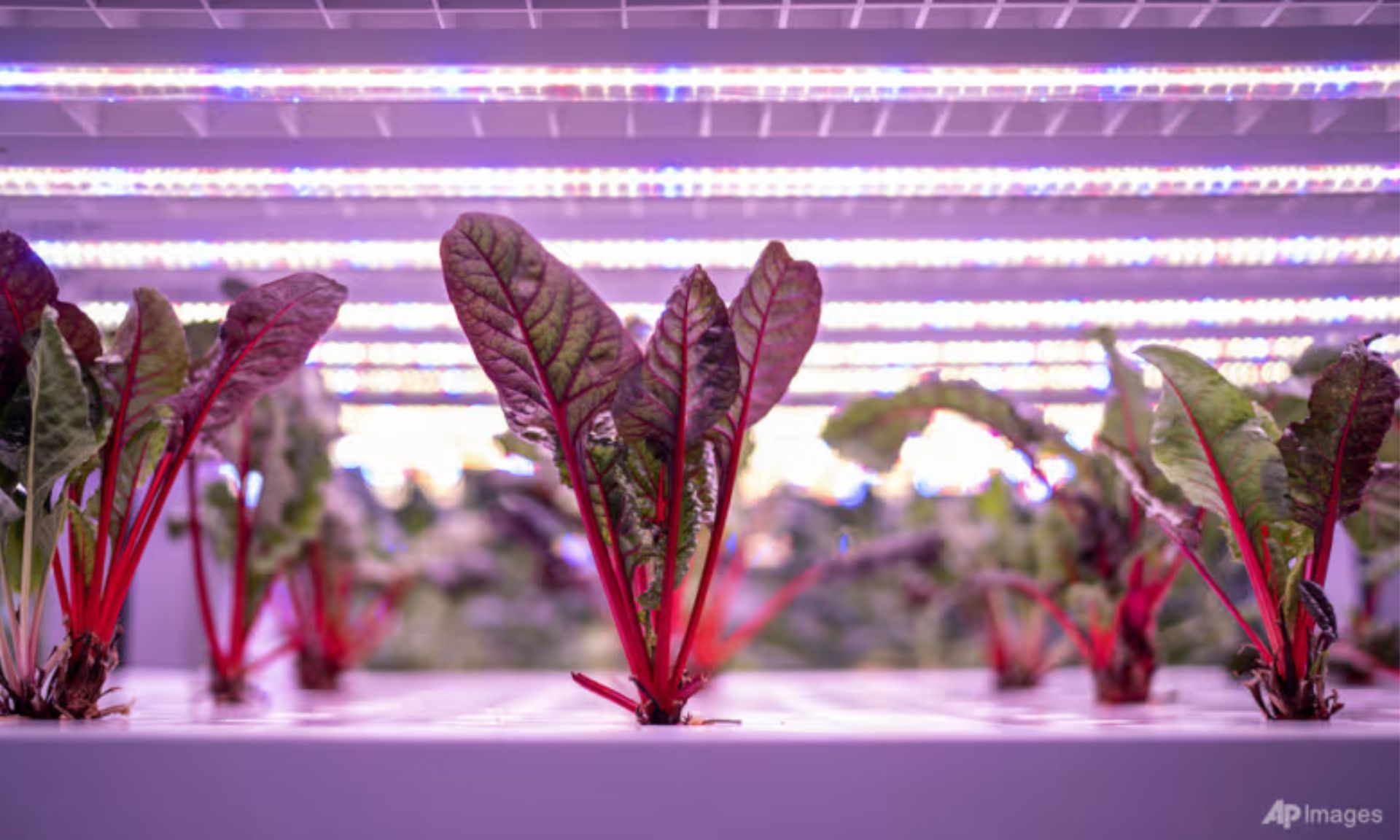Commentary: Time to rethink Singapore's '30 by 30' food resilience, amid local farm setbacks

Source: CNA
Local high-tech farms will not be able to compete on price alone, but we cannot simply lament that consumers aren’t willing to open their wallets to show support, says RSIS food security expert Paul Teng.
When the “30 by 30” goal was announced in April 2019, no one could have anticipated how Singapore’s food security would be on everyone’s minds barely a year later - when the pandemic gave us the unfamiliar sight of empty supermarket shelves.
Now, with the passing of the five-year mark, a serious question is being asked after a series of delays, failures or re-configurations of high-tech farms: Was the goal of producing 30 per cent of Singapore’s nutritional needs locally by 2030 a realistic one from the beginning – or merely the dream of planners?
It was recently reported that indoor vegetable farm I.F.F.I had shut down and VertiVegies had abandoned plans to build a mega vertical vegetable farm. Both had been awarded funding under the government’s 30 by 30 express grant.
Other agri-food casualties include aquaculture, with the Barramundi Group ceasing sea bass farming, and novel protein, in particular with the cultivated meat industry seemingly in limbo.
Given these shake-ups, is the 30 by 30 goal looking increasingly unrealistic? Will mid-point corrections be needed and expectations lowered as 2030 looms?
An Aspiration or a Plan?
The 30 by 30 goal must be viewed as a transformation exercise for import-dependent Singapore. But its focus was not well articulated on the outset: Was this an aspiration or a plan?
Till today, it is still unclear why the goal was set at 30 per cent of nutritional needs by 2030, beyond its catchy name. And without local production targets for specific food items, what would be used as measures of success?
What was clear then was the rallying call for Singapore’s agrifood sector to do more with less, by leveraging technology.
Admittedly, the vagueness allowed room for creativity and innovation. Some positive outcomes have been increased activity among agri-food start-up companies and technology developers, more research and development on agri-food production and productivity arising from the increased funding availability.
Yet this vagueness also means it is difficult to assess progress and make course corrections in a timely manner.
The Singapore Food Agency’s recent food statistics report showed local vegetable production fell by about 15 per cent and accounted for only 3.2 per cent of consumption in 2023.
Could we have done better in focusing the 30 by 30 goal? Singapore had hitherto downplayed the role of agriculture in its food security but 30 by 30 could have been developed, launched and monitored with more specifics.
Take the seminal Future Of Food series published by the Food and Agriculture Organization (FAO) of the United Nations. One lesson is that technology-push approach to transform the food system cannot be considered in isolation.
Technology a Double-Edged Sword
Technology is a known enabler to overcome constraints posed by land, labour and water in farming. But its value depends highly on the social, economic and physical environment in which it is deployed - one of the most important lessons learnt from the Green Revolution which has fed the world since World War II.
A sobering realisation with high-tech farms and factories is that energy costs determine their economic viability and indirectly affect how produce is priced.
Such farms tend to be of a corporate nature, in contrast to family- or individually-owned small farms that form the bulk of Singapore’s conventional vegetable and fish farms, and thus have high accountability to shareholders and bankers. Returns on high capital investments are less predictable and lower in farming than in other sectors, and requires some longer-term certainty in the sales of products and consumer acceptance.
They will not be able to compete on price alone, but we cannot simply lament that local consumers aren’t willing to open their wallets to show support. The 30 by 30 is a story in which consumers are expected to accept novel products like indoor-grown vegetables and lab-cultivated meat.
Only in late-2023 did realisation dawn that it is necessary to prepare society to accept new, potentially cleaner but more expensive products. The Communication Leadership in Future Food, or CLIFF, initiative was launched by non-profits, the Good Food Institute and Agri-Biotech Knowledge Centre.
Setbacks Should Not Distract Singapore From Dream
Should Singapore aspire to be more self-sufficient in food and more resilient in food security? The no-brainer answer is yes, but that doesn’t mean it is straightforward.
As a small island, Singapore will always be dependent on food imports, even if 30 by 30 is achieved. So this should not be a food security play but a food resilience one.
This nuance shifts the mindset and narrative: What does it mean to be resilient? How to secure this resilience? And importantly, where else do we need to invest and get buy-in within a larger system beyond Singapore?
During the early days of COVID-19, then Trade and Industry Minister Chan Chun Sing stressed the importance of supply chain connectivity agreements that ensure the flow of food and other essential goods from partner countries. Food imports from Malaysia did not see major disruptions during the pandemic.
The value of cultivating relationships was also illustrated in August 2023, when Singapore was exempted from India’s rice export ban due to a “very close strategic partnership”.
So 30 by 30 needs to be part of a larger whole-of-system strategy that takes into account other ways to assure food resilience. What a resilient food future for Singapore should encompass will require more work ahead.
But in the end, even if 30 by 30 is a dream, it is a dream worth pursuing.
Paul Teng is a food security expert with the Centre for Non-Traditional Security Studies, S Rajaratnam School of International Studies (RSIS), at Nanyang Technological University (NTU), Singapore.
Register
Login
Login
Register